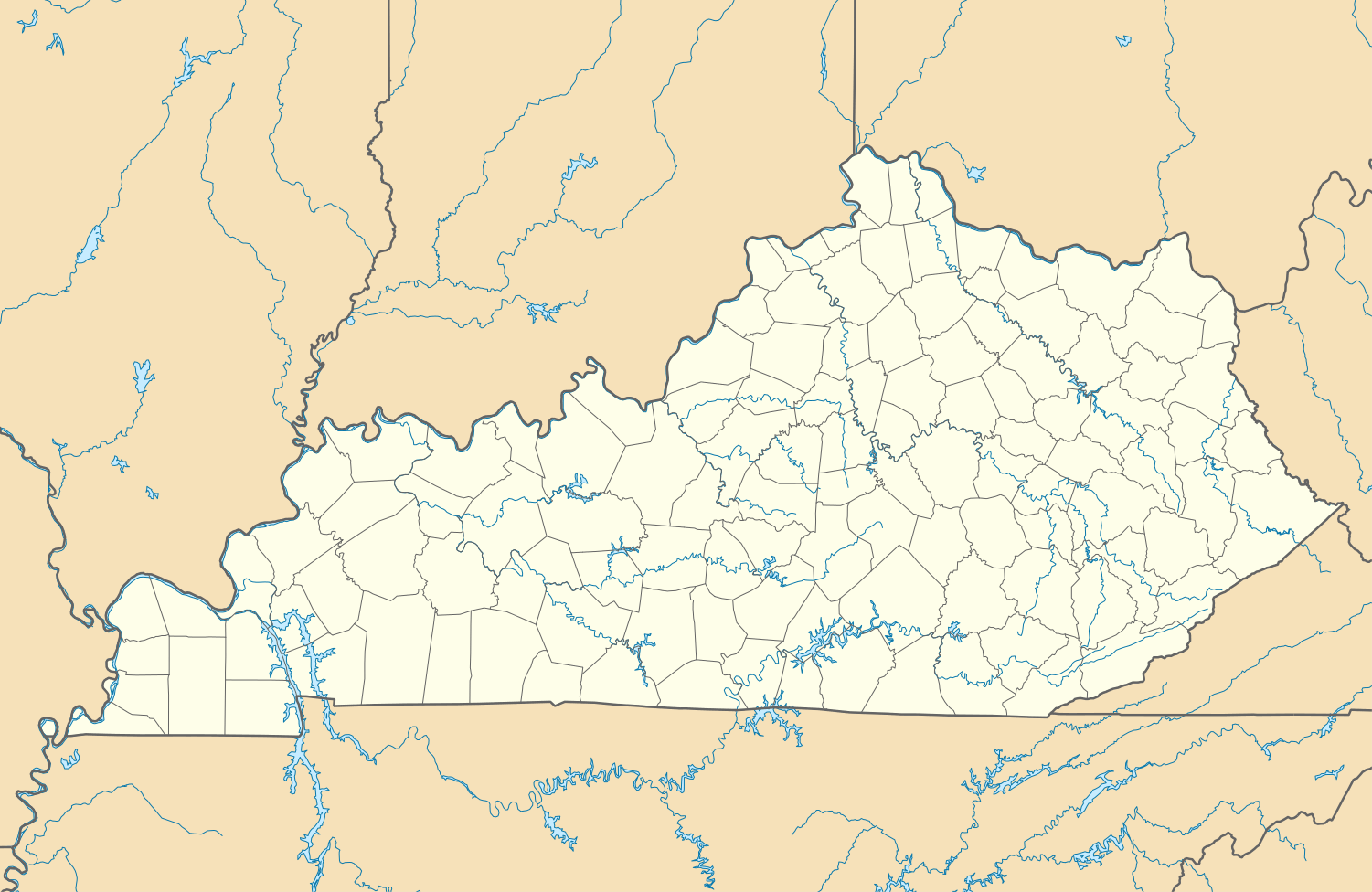African Cemetery No. 2 (Lexington, Kentucky)
|
African Cemetery No. 2 | |
|
African Cemetery No. 2 | |
  | |
| Location | Lexington, Kentucky |
|---|---|
| Coordinates | 38°3′00.5″N 84°28′41″W / 38.050139°N 84.47806°WCoordinates: 38°3′00.5″N 84°28′41″W / 38.050139°N 84.47806°W |
| Area | 7.7 acres (3.1 ha) |
| NRHP Reference # | 04000245[1] |
| Added to NRHP | March 31, 2004 |
African Cemetery No. 2, also known as The Cemetery of the Union Benevolent Society No. 2, is a historic burial site located in Lexington, Kentucky, United States.[2]
Founding and history
The first burials occurred on the property as early as the 1820s. The Colored Peoples Union Benevolent Society No. 2 purchased the property for use as a cemetery in 1869. The last burials in the cemetery took place in 1974.[2]
In 1889, 300 bodies were moved from the Presbyterian Cemetery on Limestone Street to African Cemetery No. 2 under the supervision of C. O. H. Thomas.[3][4]
In 1973, Lexington city government took control of the cemetery.[5] In 1979, the African Cemetery No. 2, Incorporated was organized to save the cemetery.[6]
In June 2003, a Kentucky Historical Highway Marker was placed on the site.[6] The cemetery was added to the National Register of Historic Places on March 31, 2004.[1]
Burials

The eight acre (3.2 ha) cemetery contains over 5,000 graves, of which 1,200 are identified with less than 600 being recognized with markers.[2] More than 100 graves are those of military veterans, with 49 being U.S. Colored Troops of the American Civil War.[7]
Clarence Espy was one of the soldiers who served with the 369th Infantry, the regiment which became known as the "Harlem Hell Fighters". Espy, a native of Lexington, was awarded the Croix de Guerre, France's highest military honor.[8]
R.C.O. Benjamin, a journalist and an attorney, was murdered on October 2, 1900 during an altercation involving voting rights for African Americans.[9] In 1910, a monument was dedicated at his grave site.[9]
Thoroughbred Racing Hall of Fame jockey, Isaac Burns Murphy was originally buried in African Cemetery No. 2.[10] Murphy, the first jockey to win three Kentucky Derbys,[11] died February 12, 1896 of pneumonia. In 1967, his remains were moved to the Man o' War grave site off Russell Cave Road, and was moved again in 1987 to the Kentucky Horse Park.[10]
Restoration
On April 4, 2002, volunteers from Canine Solutions International searched, mapped, and studied the physical grounds of the cemetery.[2]
The approach to preserving the cemetery grave stones was the subject of a paper by M. Riegerta and A. Turkington. The paper published in Building and Environment discusses the "scientific knowledge of decay processes with conservation theory and the needs of stakeholders".[12]
See also
- African American history
- Lexington in the American Civil War
- National Register of Historic Places listings in Fayette County, Kentucky
References
- Notes
- 1 2 National Park Service (2010-07-09). "National Register Information System". National Register of Historic Places. National Park Service.
- 1 2 3 4 "African Cemetery No. 2". African Cemetery No. 2. University of Kentucky. 2008-04-27.
- ↑ "Removing The Dead". The Kentucky Leader. University of Kentucky. 1889-05-20.
- ↑ "Injunction Granted". The Kentucky Leader. University of Kentucky. 1889-05-22.
- ↑ "City Approves Ordinances On Cemetery". The Lexington Leader. University of Kentucky. 1973-04-19.
- 1 2 "African Cemetery No. 2". Isaac Scott Hathaway Museum. Isaac Scott Hathaway Museum, Inc. Retrieved 2009-07-23.
- ↑ "Notable Kentucky African Americans Database". University of Kentucky Libraries. University of Kentucky. 2008-04-28.
- ↑ "Annual Reports". 2006. Hathaway Museum. 2008-04-27.
- 1 2 "Annual Reports". 2006. Hathaway Museum. 2008-04-27.
- 1 2 "African Cemetery No. 2 walking tour". African Cemetery No. 2. University of Kentucky. 2008-04-27.
- ↑ "Isaac B. Murphy". Hall of Fame: Jockey's. National Museum of Racing and Hall of Fame. 2004. Archived from the original on May 10, 2008. Retrieved 2009-07-23.
- ↑ Building Stone Decay: Observations, Experiments and Modeling
External links
| Wikimedia Commons has media related to African Cemetery No. 2. |
- African Cemetery No. 2 web site
- http://www.findagrave.com/cgi-bin/fg.cgi?page=cr&CRid=2266490&CScntry=4&CSst=19&CScnty=1022&


